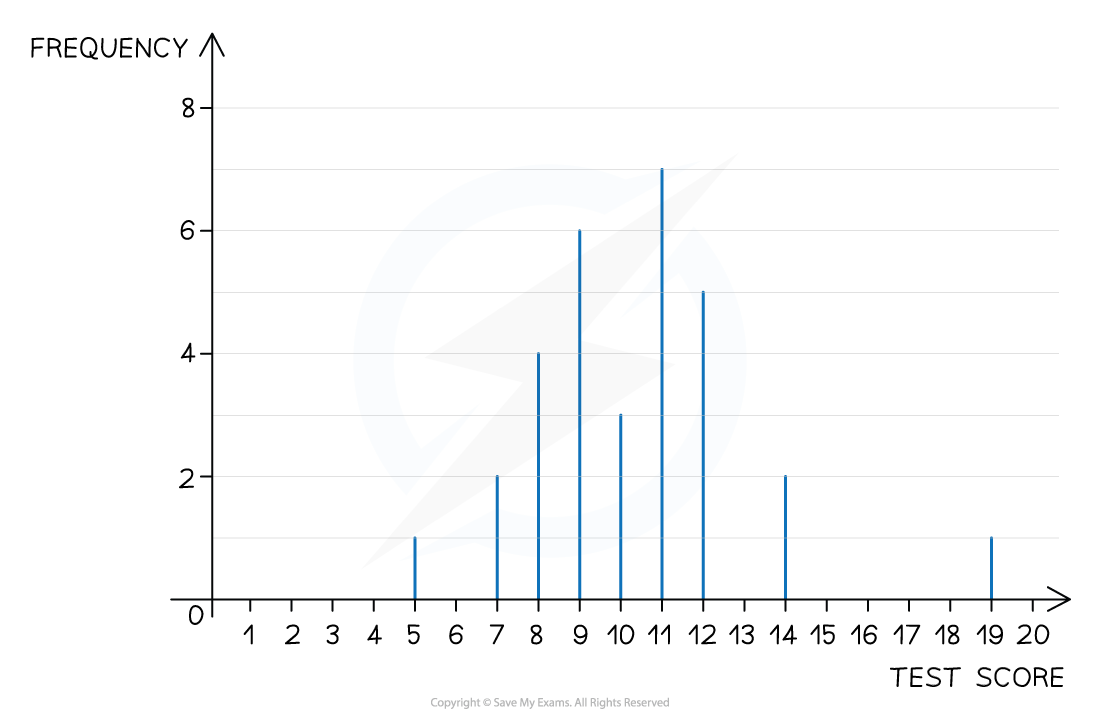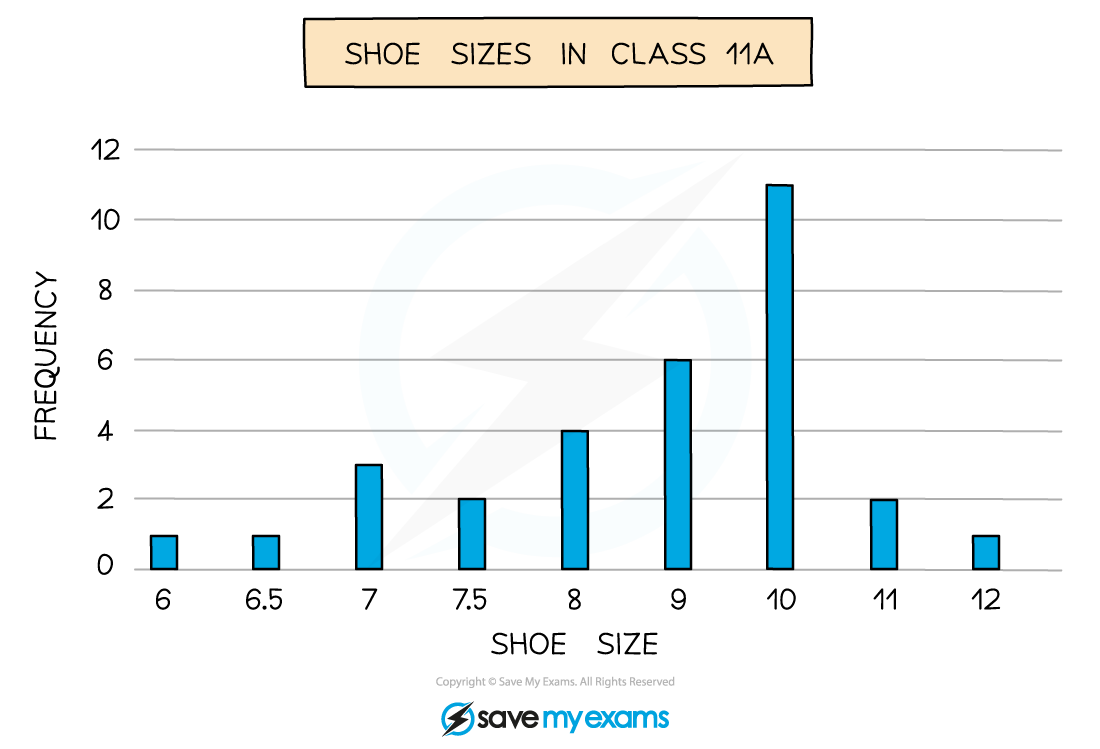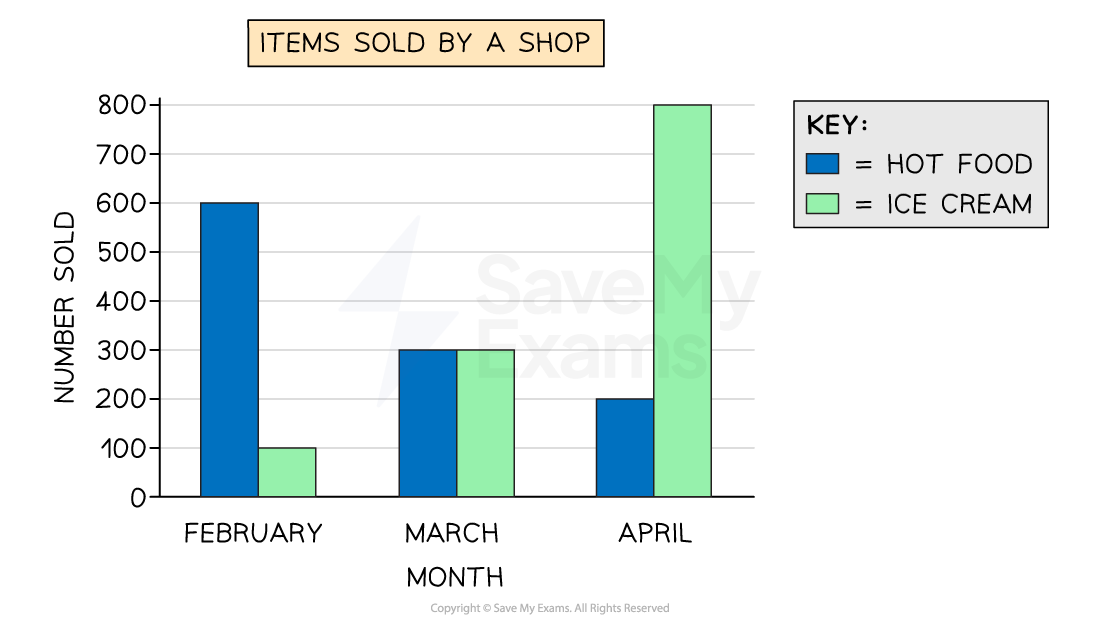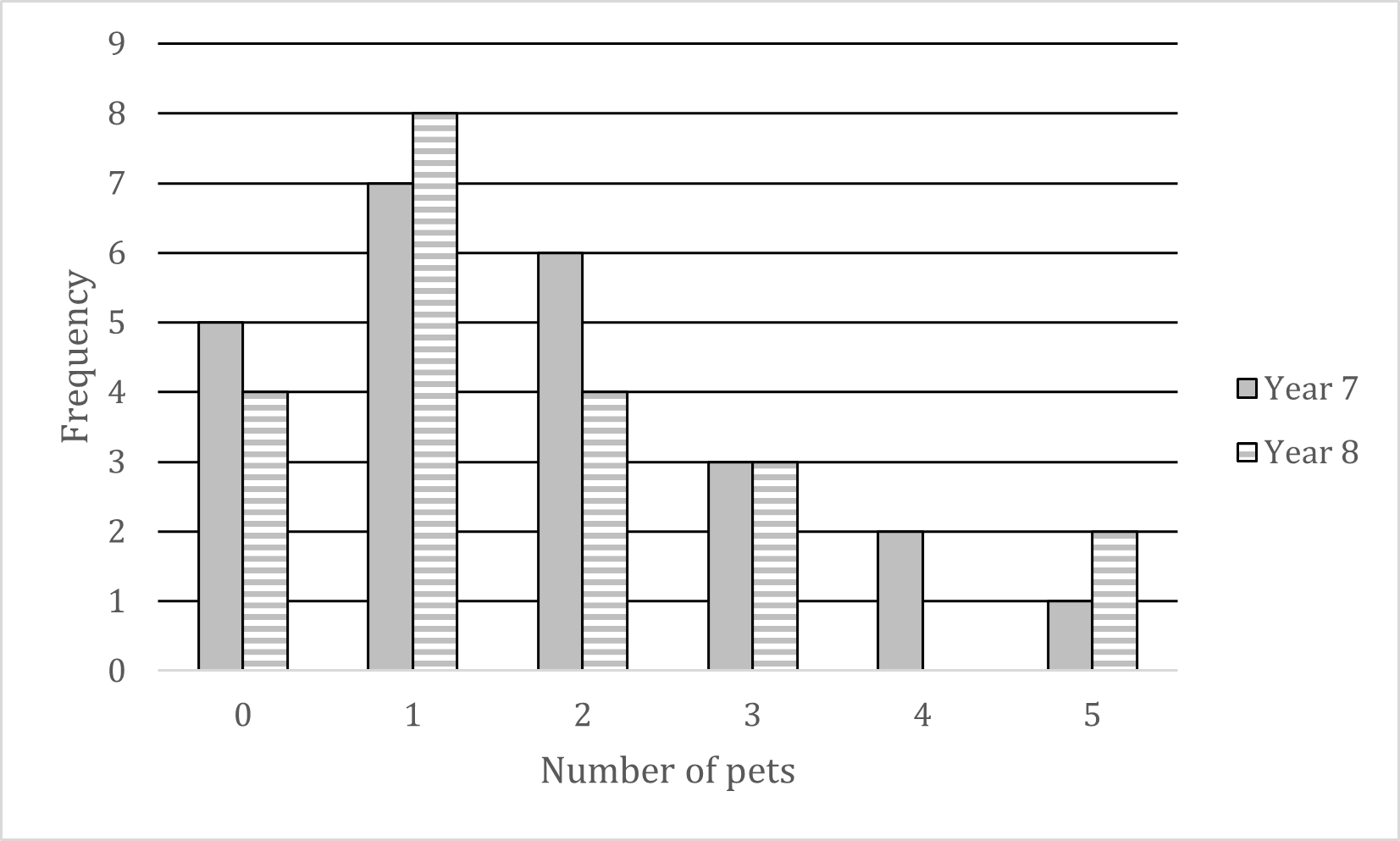Bar Charts & Pictograms (AQA GCSE Maths) : Revision Note
Line Charts, Bar Charts & Pictograms
What is a line chart and what is it used for?
Sometimes called a vertical line chart, this a visual way to represent discrete data
Line charts are used for numerical data (rather than categorical data)
They are particularly useful when there are lots of different options to show
e.g. Results of a test where scores are given as percentages
The vertical axis shows the frequency
The scale should start at zero and increase in equal amounts
The horizontal axis shows the different outcomes
A vertical line is drawn for each outcome and its height is its frequency

You can easily identify the mode using a line chart
The mode is the most common outcome
This will be the outcome with the highest (tallest/longest) line
e.g. In the line chart above, 11 was the modal test score, with a frequency of 7
You can quickly see how the data is spread using a line chart
Lines may be crowded around a particular group of options with only a few elsewhere
This may help identify anomalies or outliers in the data
e.g. In the line chart above we can see
the majority of the test scores, out of 20, were between 7 and 12
one pupil scored 19 out of 20, much higher than anyone else in the class
What is a bar chart?
A bar chart is a visual way to represent discrete data
Discrete data is data that can be counted
This can be numerical like shoe sizes in a class
Or non-numerical (categorical) like colours of cars down a road
The horizontal axis shows the different outcomes
The vertical axis shows the frequency
The heights of the bars show the frequency
Bars should be separated by gaps
Bars should have equal widths

The mode is the outcome with the highest bar
You can also get dual bar charts to compare two data sets
Bars are in pairs (side-by-side) for each outcome

What is a pictogram?
A pictogram is an alternative to a bar chart
It is used in the same situations
There are no axes
Frequency is represented by symbols
A key shows the value of 1 symbol
For example, 1 symbol represents a frequency of 2
Half and quarter symbols are often used

The pictogram above shows the shoe sizes of students in a class
As 1 picture of a shoe represents 2 students
Half a shoe represents 1 student
The number of students with a shoe size of 7, is 3
Examiner Tips and Tricks
If asked to draw a bar chart, find the largest frequency and choose a scale which makes that fit in the space provided
If asked to draw a pictogram, pick a symbol that is easy to duplicate and draw half (or quarter) of
Worked Example
Mr Barr teaches students in Year 7 and Year 8.
He records the number of pets that students in each year have.
His results are shown below.

(a) Write down the modal number of pets for his Year 7 students.
The modal number (mode) is the number of pets that occurs the most
Visually, this will be the highest bar for Year 7s
The mode for Year 7 is 1 pet
(b) How many Year 8 students does he teach?
Add up all the heights (frequencies) of the Year 8 bars
4 + 8 + 4 + 3 + 0 + 2
He teaches 21 Year 8 students

You've read 0 of your 5 free revision notes this week
Sign up now. It’s free!
Did this page help you?
